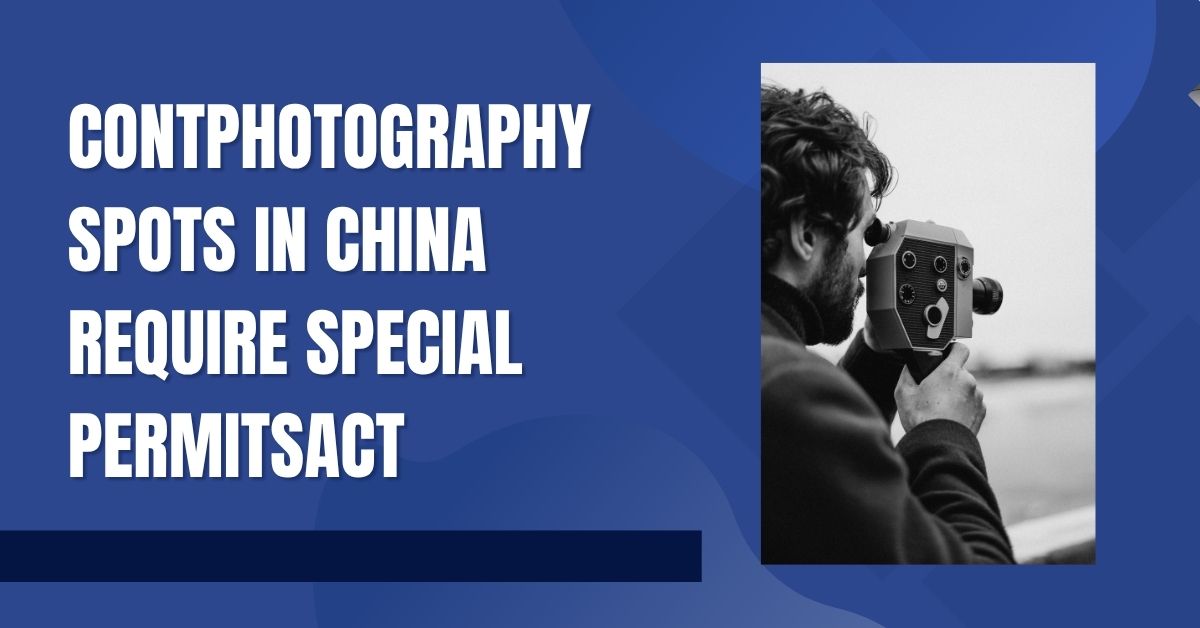Photography is a powerful way to capture your travels, and China is full of stunning landscapes and historic sites. However, many of the most striking locations require special permits due to environmental, cultural, or security reasons. You can’t always just arrive and start shooting. Planning is key.
With an eSIM, staying connected becomes easier, providing you with access to permit applications, local updates, and maps directly from your phone. This makes the entire process smoother and helps ensure you don’t miss out on the country’s most breathtaking photo opportunities.
Also Read, Best Photo Design and Editing Apps
Tibet Autonomous Region
Tibet remains one of the most sought-after destinations for cultural and natural photography. With its towering Himalayas, sacred monasteries, and prayer flag-draped passes, it offers a surreal atmosphere unlike anywhere else. However, access to Tibet is tightly controlled. Both Chinese and foreign travelers need special entry permits, and foreign visitors must book their trip through an authorized travel agency. Independent travel is not allowed.
If you plan to photograph remote monasteries or restricted zones such as Mount Kailash, additional permits are required. A stable internet connection is vital during this process. Many photographers use an eSIM for China to upload documents, receive approvals, and communicate with tour coordinators, eliminating the need for a local SIM card.
Xinjiang Uyghur Autonomous Region
Xinjiang’s dramatic deserts, ancient Silk Road towns, and stunning mountain ranges offer endless photographic opportunities. Yet the region is politically sensitive and heavily monitored. While general access is permitted, photography around certain buildings, border areas, and checkpoints can draw unwanted attention or require prior approval. In some cases, drone usage is completely banned unless you hold a license and written authorization.
Because information in the region changes frequently, real-time updates and contact with authorities or guides can be essential. Having access to messaging apps, translation tools, and maps through an embedded SIM helps ensure your shooting plans align with local regulations.
Military and Border Zones
China shares borders with 14 countries and is home to numerous military installations, many of which are not visibly marked to tourists. Areas near the borders of North Korea, India, or sensitive regions in Yunnan and Inner Mongolia may be off-limits for photography, even if they appear accessible for travel. Taking photos of bridges, border posts, or guard stations can lead to confiscation of equipment or worse.
To avoid mishaps, it’s smart to verify if the area falls under a restricted zone before setting out. With a connected smartphone powered by a China-compatible digital SIM, you can access satellite images, consult expat forums, or contact local guides in real-time.
Cultural Heritage Sites with Access Limits
Specific UNESCO sites or heritage locations, such as the Mogao Caves in Dunhuang or temples in Wutai Mountain, impose strict limits on photography to preserve ancient artwork or out of respect for religious practices. While some areas within these sites may allow cameras, others are completely off-limits or require a paid permit.
Rules usually change based on the season or current preservation work. That’s why staying online with a virtual SIM for China becomes a huge advantage; you can check current restrictions and book limited-access photography sessions with ease, without depending on hotel Wi-Fi or public hotspots.
Remote Ethnic Villages and Festivals
Capturing life in China’s ethnic minority villages, from the Miao in Guizhou to the Dong in Guangxi, offers deeply personal photo stories. However, cultural sensitivity and permission are key. Some festivals, traditional rituals, or ceremonies may prohibit photography, and in certain villages, local councils require payment or a formal application for access to these events.
Since communication can be challenging in remote regions, having access to translation apps, cultural guides, and permit forms is crucial. That’s where a stable mobile connection, enabled by a Chinese embedded SIM, proves invaluable, especially when you’re far from major cities.
Drone Photography Regulations
Drone use in China is closely regulated and monitored. For areas like Zhangjiajie National Forest Park or the Yellow Mountains, drone photography usually requires local registration, a flying license, and occasionally, an additional filming permit. In urban areas, drones are usually banned outright unless approved in advance.
Applying for these permits typically involves submitting flight plans, identification documents, and drone specifications to local authorities. The entire process is smoother when you’re connected through your phone. An eSIM for China allows you to upload documents, track applications, and receive real-time updates while staying mobile.
Commercial or Media Filming
If your shoot is for a documentary, vlog, or commercial, you’ll need more than just entry permits. Places like the Forbidden City, the Great Wall, or pagodas require filming licenses from local authorities. Applications must include scripts, dates, crew details, and purpose.
Approvals can take time, and any schedule change may mean resubmitting paperwork. A strong data connection is essential; you can share files, communicate with officials, and stay on top of logistics even while on the move.
Final Thoughts
China’s beauty and heritage make it a photographer’s dream. But great shots usually come with rules. Some regions require permits, especially places like Tibet or protected parks.
Being prepared is essential. Staying connected simplifies travel logistics, and a virtual SIM provides you with access to everything you need, without the need for physical SIM swaps or poor network coverage. Before you shoot, make sure you’re connected the smart way.
